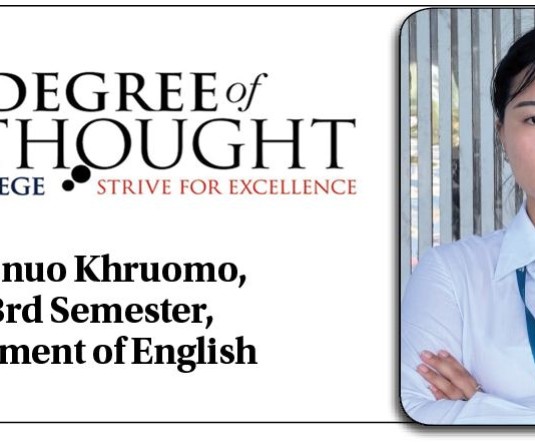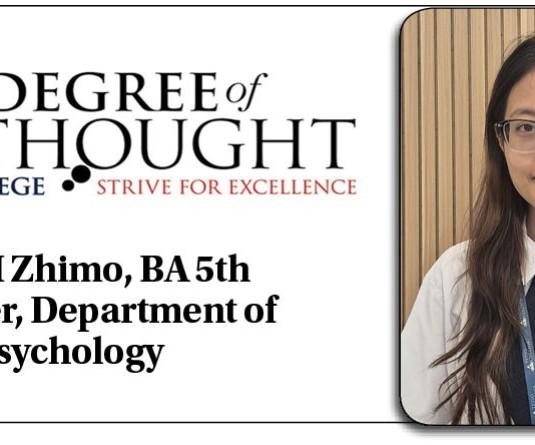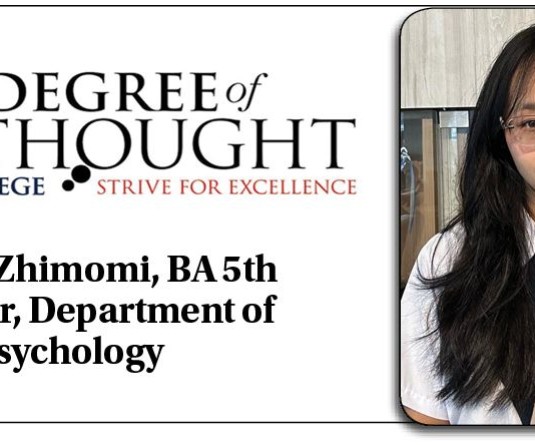
A field trip was organized by the History Club in collaboration with the History Department on 15th of February 2020 under the theme "Learning Through Experience". It was a one day trip to Kohima and kisama. The War Cemetery located in Kohima was built and maintained by the Commonwealth War Graves Commission. The Kohima War Cemetery is open everyday but the time schedule is different, from March to September it is open from 8:00 am to 4:00 pm and from October to February,it is open from 8:00 am to 03:30 pm. The cemetery is designed in such a way that it is impossible for people on wheelchair to visit this place. The cemetery was designed by Colin St.Claire Oaks where around 2300 commonwealth servicemen are buried and commemorated of which around 150 remain unidentified. It is said that the graveyard was constructed immediately after the Battle of Kohima and the bodies were buried according to their religion, regiments, battalions and ranks. There is a map drawn at the entrance of the cemetery to assist the visitors to get a better insight about the cemetery, just below that a visitor book and cemetery register can be found. There is a Cross of Sacrifice at the top which is District Commissioner's tennis court. There is a Stone of Remembrance where the entry is restricted and there is a portion where Brigade and Regimental memorials are located. One can also see the Cherry Tree which is still there, the tree was used as a snipers’ post by the Japanese and which was destroyed in the fighting, the present tree is an offshoot from the old stamp. Around 900 Buddhist, Hindu and Sikh soldiers were cremated in Kohima war cemetery. The grave of Captain John Randle VC on plot 2, Row C, Grave No 8, is a particular point of interest. He served in the Norfolk Regiment and is still remembered for his bravery and also for assisting the wounded comrades under fire. It is believed that he lost his life when he threw a grenade into the Japanese Bunker and then flung himself across the entrance to seal it. For his bravery he was posthumously awarded the Victoria Cross which is the most prestigious award for bravery, he died at the age of 26. At the bottom of the cemetery bears the Famous Kohima Epitaph.
The visit to Kohima war cemetery was a very great experience. Normally when we visit a cemetery, we get goosebumps and the emotions we feel are of sadness and most of the time it is scary but Kohima war cemetery has a very different aura. It was like a rewinding journey to the past 75 Years. The bodies lying beneath the ground belong to those brave soldiers who gave their lives while fighting. Salezu Angami was the only Naga who lost his life during the battle on 17th April, 1944 at age of 21, served under the Assam Regiment. Seeing his name engraved in the gravestone along with other brave soldiers gives us a sense of pride being a Naga, his name carries the dignity of all Nagas. There are many names engraved in the gravestones but there were some unidentified soldiers whose names and designations were unknown to the world. Their name and the country that served remains mysterious for the world. It is so unfair for them that their bodies cannot be identified. The Commonwealth Graves Commission did justice to these brave soldiers by maintaining the place so well. Because of their initiative people from all over the world visit this place and the bravery shown by the soldiers during the war is made known to every visitor. There is a Cemetery Register and Visitor book where one can find name lists and thoughts written by different visitors from different countries. Among them, one person wrote "we are alive because they gave their lives, Saluting them". It is very true these brave soldiers gave up their life fighting for our better tomorrow.
The World War II Museum which is located at Kisama, 10 kilometers away from Kohima is maintained by the Department of Art and Culture Nagaland. The museum was completed and inaugurated in 2008 and it holds a collection of artefacts from the time of the Battle of Kohima. The context, events and outcomes of the battle are vividly explained through the different collection displays in the museum. The Museum has been constructed to show the visitors how, where and when the battle was fought. Almost everyone knows and heard about WWII but many are ignorant about how it actually happened, what were the conditions of the people, the important dignitaries who took part in the battle. The collections preserved in the museum brings back the historic events more alive and provides a better idea about the siege of Kohima (4th April - 22 June 1994) between Allied powers and Japanese troops.
In the Museum, the picture of Major Fujiwara Iwaichi, Lieutenant General Kotoka Sato, Lieutenant General Renya Mutaguchi, General Kavabe and Subhas Chandra Bose can be seen. There are guns, helmets and other stuff displayed which were actually used by soldiers during the war. The Pagadi (Turban) belonging to Wopanesao Kithan who served as cook for three Deputy Commissioners- Dr J H Hulton, Mr J P Mills, Mr C R Payday in Kohima under the British government is displayed in the museum. The Turban was said to be a part of the uniform which the cooks wore while performing their duty. There is also a tribute, which was donated by Apanuo Nephi on behalf of the Japanese war Veteran 31st mountain Artillery Regiment .
Apart from others, there is a section in the museum which holds the poster with the title "Kohima Remember", which contains some of the lines written by the Nagas who happened to witness the battle. From their experiences, one can comprehend how the Nagas had run from place to place seeking shelter and how they were traumatized by the thunderous and the heavy sounds of modern weapons. During the war even though the Nagas supported the British, in the lines of some Nagas where the Japanese armies show the photograph of their wife and children, they felt sympathy towards Japanese because they knew that even they were human like them.
The Siege of Kohima left an indomitable mark on the history of Naga. The Nagas were introduced to new technologies and new ways of life. Their outlook began to change and their prospective became broader. Thus,the Battle of Kohima which is considered as the bloodiest and fiercest battle had profoundly impacted nagas in many spheres.
Degree of Thought is a weekly community column initiated by Tetso College in partnership with The Morung Express. Degree of Thought will delve into the social, cultural, political and educational issues around us. The views expressed here do not reflect the opinion of the institution. Tetso College is a NAAC Accredited UGC recognised Commerce and Arts College. The editors are Dr Hewasa Lorin, Dr. Aniruddha Babar, Dr. Pfokrelo Kapesa, Webei Tsühah, Meren and Kvulo Lorin. For feedback or comments please email: dot@tetsocollege.org.






